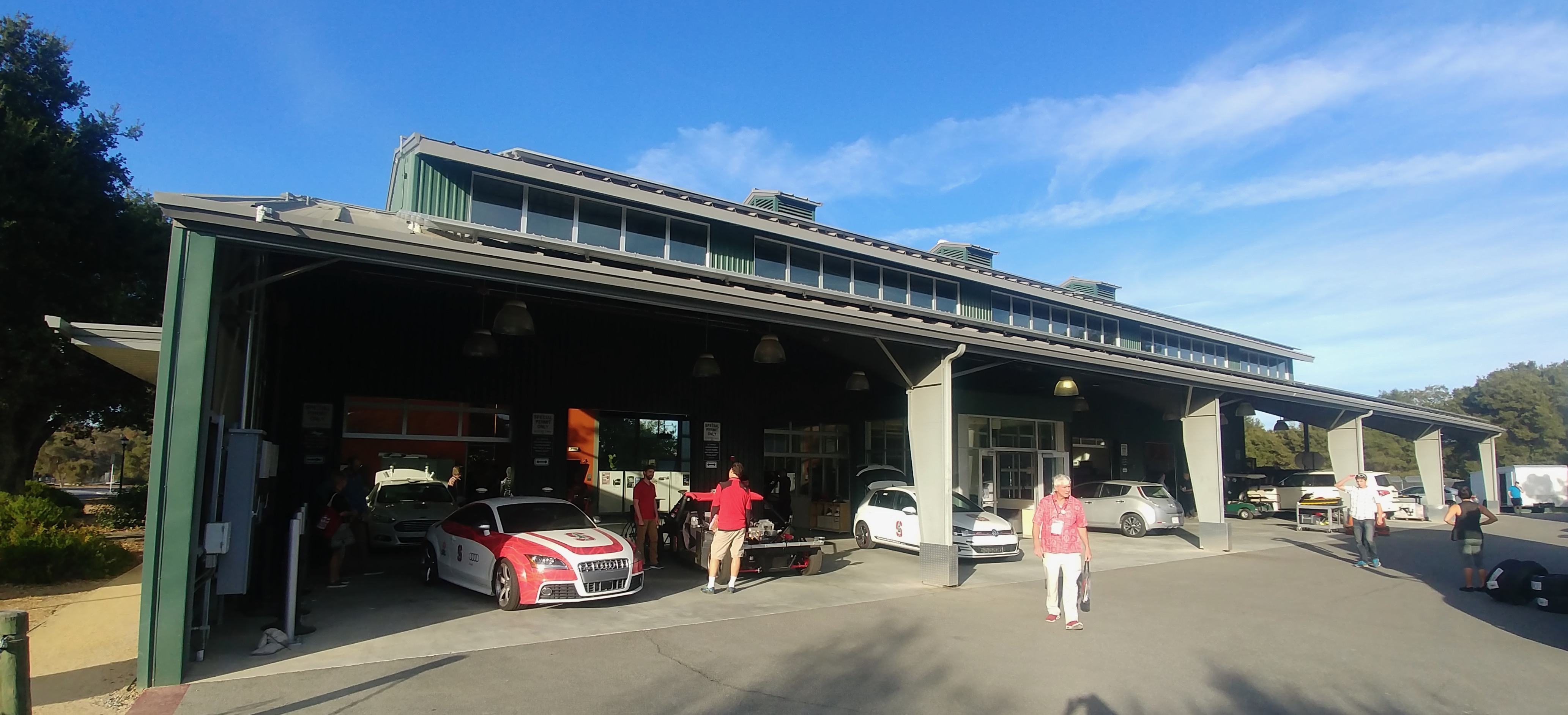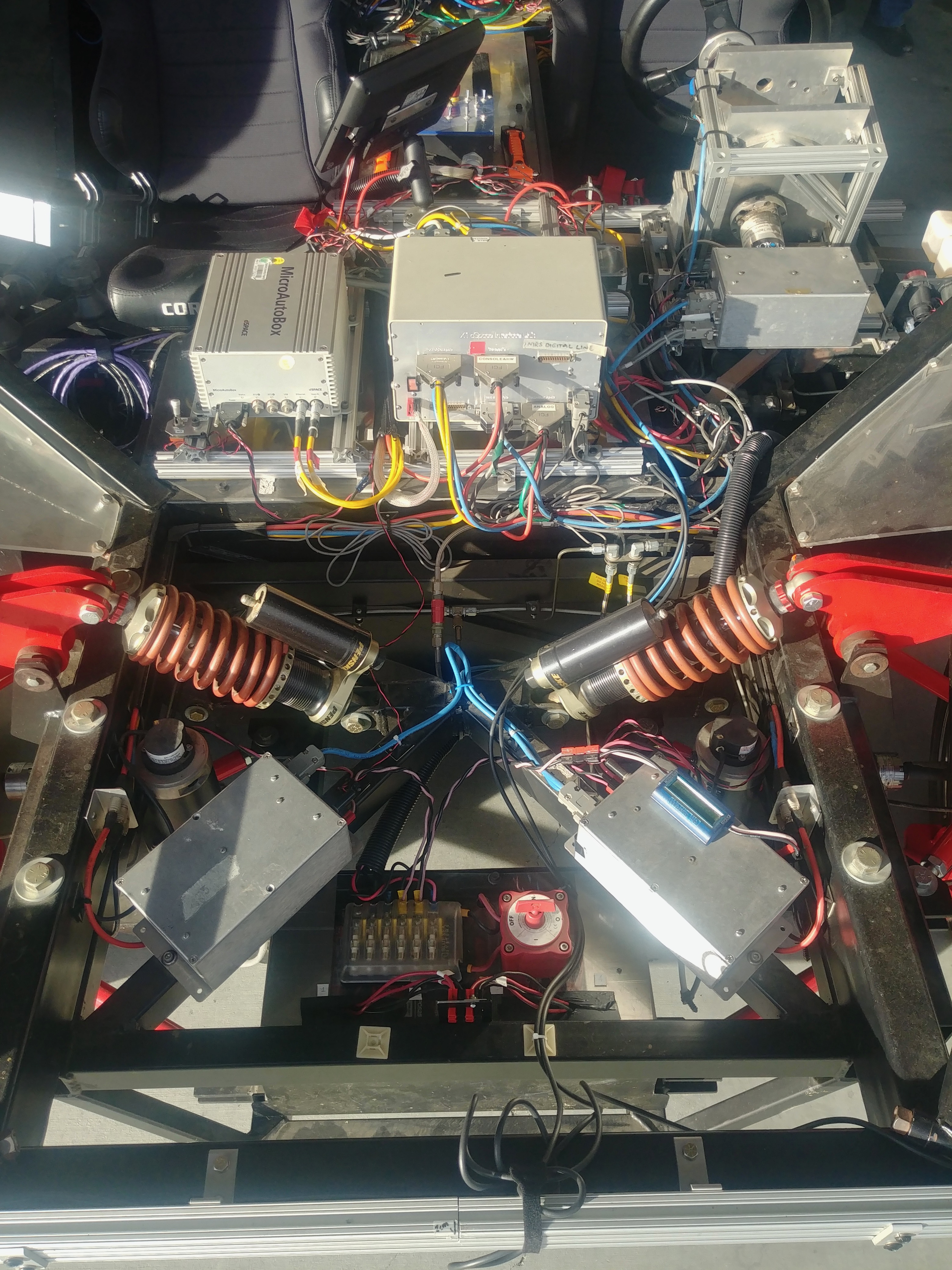If you look in a far corner of the Stanford University campus, you will find The Center for Automotive Research, a place where students, professors, manufacturers, and even the federal government, are working together to bring about our automotive future.
While attending my wife, Ann’s, Stanford class reunion, I was able to take a tour of the lab. I was simply amazed.
More commonly known as CARS, the institute was founded in 2008 by Chris Gerdes, a professor of mechanical engineering; Sebastian Thrun, a professor of research in computer science; and Cliff Nass, a professor of communication.
The researchers and students involved with CARS make their camp at a building funded by VW — the Automotive Innovation Facility houses the Volkswagen Automotive Innovation Lab, or VAIL. Within this humble building is a state-of-the-art research facility where interdisciplinary teams of students, industry engineers and faculty work on various projects that, to quote Chris Gerdes, “move vehicle human-centered mobility forward.”

This is an amazing place — part garage, part computer center, and part simulation laboratory. The ability to take a spin in the 360-degree simulator is alone worth the visit. The detail on the screens is amazing and even the mirrors of the car are part of the simulation, with screen in each.
VAIL also houses Stanford’s Solar Car Project that designs, builds and races the latest vehicle competing in the World Solar Challenge in Australia
But the best part of the facility though are the test cars themselves. Each is used to test a different type of automotive problem, centered around the idea of self-driving cars.


Each of these cars has a name. First there is X1, an entirely student-built test vehicle that can lap a race track faster than a SCCA Spec Miata national champion. This car is without bodywork and looks most like an Ariel Atom.
When the car was tested against a champion driver, it was able to beat that driver. After a few sessions, the human driver changed his driving line and finally beat X1. Realizing that having the cars software based on a set racing line was a bad way to program it, the engineering student assigned to the project rewrote the code to have the car ignore the preset racing line and instead to simply go as fast as the car was capable and to choose it’s own preferred racing line.
The rematch against the SCCA champion human driver is likely to see X1 beating the driver.
An interesting tidbit is that CARS engaged the help of championship racing driver John Morton to “teach” the computers how a car on the race track is supposed to move. They have not yet had Morton back to test his skills against the X1, but plan is to do so, to ee how good a teacher he was for the computers.
Another car, and the first car that CARS developed, is named Shelley. She is an automated Audi TT-S that can lap a race track as quickly as an expert driver and, in fact, was able to complete the Pikes Peak Hill Climb without a driver at the helm. This was not a remote-controlled car, but a completely autonomous one.
Finally there is Marty. He is the most outrageous car in the garage, an electrified DeLorean. What Marty is used for is even more crazy. This automated electric-powered DeLorean is capable of executing controlled drifts. The fact that any fully automated car can complete a drift is astounding in itself, but when you add that the car is a DeLorean, you begin to understand the geniuses who people this amazing place.
The results of these different cars accomplishments are available on YouTube for your viewing pleasure and I urge you to check out some of these videos. What you will come away with is that the CARS lab is at the forefront of autonomous car development and visiting the lab is a look Back To The Future.
You can find out more about CARS on the laboratory’s website.




